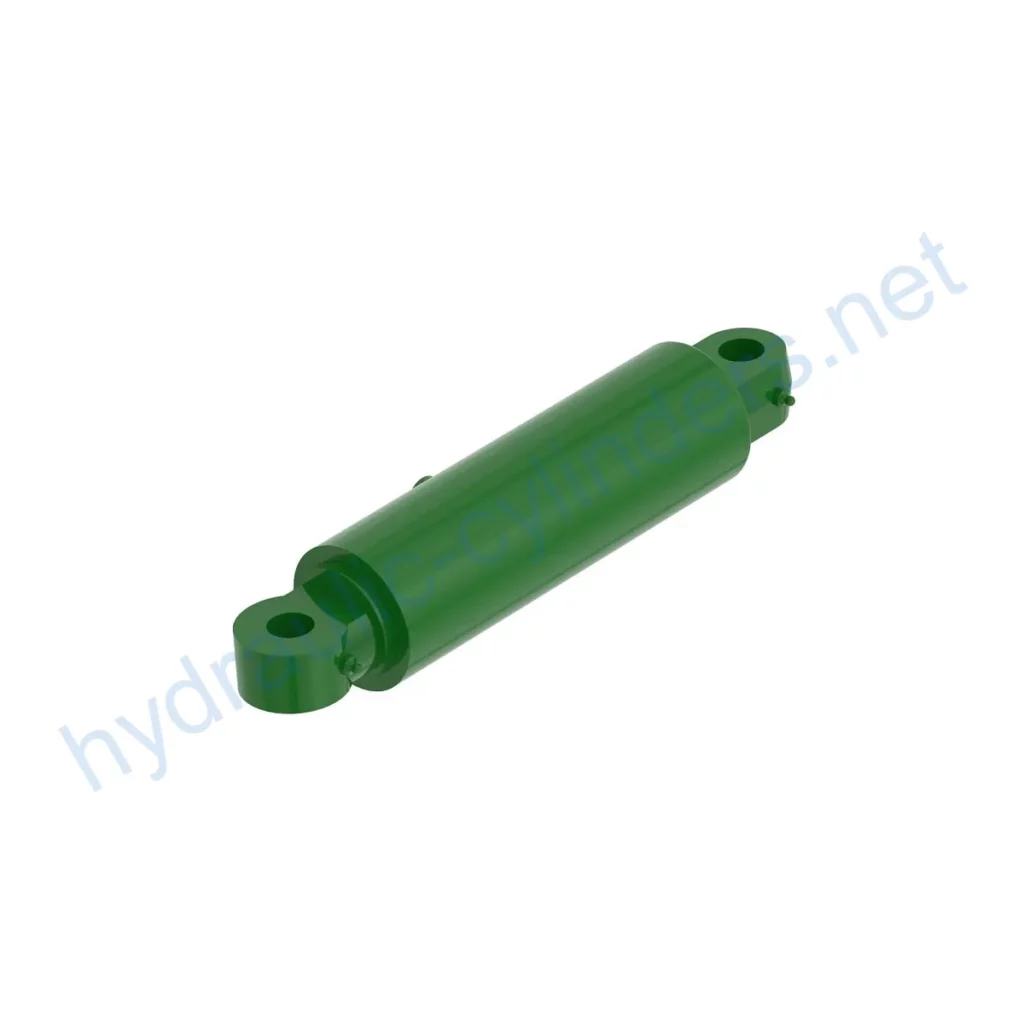Replacement Of AHC15529 Hydraulic Cylinder
The Replacement Of AHC15529 Hydraulic Cylinder is a crucial component used in various machinery models, including 5075M, 5090M, 5090R, 5095M, 5100M, 5100MH, 5100ML, 5100R, 5105M, 5105MH, 5105ML, 5115M, 5115ML, 5115R, 5115RH, 5120M, 5120ML, 5125M, 5125ML, 5125R, and 5130M. This hydraulic cylinder is designed to provide reliable and efficient performance in a wide range of applications.
Specifications
- Weight: 38.83 lb
- Height: 3.9 in
- Width: 5.2 in
- Length: 18.5 in
Features
- Improved Equipment Performance: Replacing damaged or worn hydraulic cylinders can restore the normal operational capability of equipment, ensuring its performance in various applications.
- Enhanced Safety: Regularly replacing hydraulic cylinders can reduce safety hazards caused by cylinder failures, ensuring the safety of operators and equipment.
- Overload Protection: New cylinder designs often incorporate better overload protection mechanisms, improving safety.
- Quick Installation: Modern hydraulic cylinders are designed with ease of installation and replacement in mind, minimizing downtime.
- Standardized Components: Many hydraulic cylinders are standardized products, making it easier to obtain replacement parts in the market.
Applications
The Replacement Of AHC15529 Hydraulic Cylinder finds its application in various scenarios, including:
- Excavators: Hydraulic cylinders on the boom or bucket of excavators may require replacement due to long-term use or overloading, restoring normal operation.
- Cranes: Hydraulic cylinders on the lifting arms of cranes are prone to wear during frequent lifting and lowering, requiring regular replacement for safety.
- Tractors: Hydraulic cylinders on the front loaders of tractors may experience leaks or performance degradation due to continuous lifting and tilting operations, necessitating replacement.
- Combine Harvesters: In the harvesting process, hydraulic systems endure high pressure, and cylinders may get damaged due to fatigue, requiring timely replacement for maintaining work efficiency.
- Automated Production Lines: Hydraulic cylinders are used to control robotic arms and other automated equipment. Cylinder failure can impact production efficiency, necessitating immediate replacement.
- Die Casting Machines: Under high pressure and temperature environments, hydraulic cylinders may experience performance deterioration. Regular replacement ensures product quality.
- Mining Equipment: Hydraulic cylinders are used for lifting and moving heavy loads in mining equipment. Due to harsh working conditions, regular inspection and replacement are necessary to avoid equipment failure.
- Bulldozers: Wear of hydraulic cylinders on the bulldozer’s blade arm can lead to a decrease in pushing ability, requiring timely replacement to maintain operational efficiency.
Maintenance Tasks
- Regular Inspection: Perform routine checks to identify any abnormalities or signs of wear in the hydraulic cylinder.
- Proper Lubrication: Ensure the cylinder is adequately lubricated to minimize friction and extend its lifespan.
- Seal Replacement and Calibration Check: Replace worn seals and periodically calibrate the cylinder to maintain optimal performance.
Safety Considerations and Environmental Factors
When using hydraulic cylinders, it is essential to prioritize safety measures and consider environmental factors. Proper safety precautions help prevent accidents and minimize environmental impact.
Fault Diagnosis and Common Issues
Common problems associated with hydraulic cylinders include:
- Leakage: Leaking hydraulic fluid indicates a potential issue with seals or other components.
- Insufficient Pressure: If the hydraulic cylinder fails to generate adequate pressure, it may be due to internal leaks or pump-related problems.
- Slow Operation: If the cylinder operates sluggishly, it could be a sign of insufficient lubrication or wear on internal components.
- Abnormal Noise: Unusual noises during operation may indicate the presence of air in the hydraulic system or worn-out components.
- Inconsistent Movement: If the cylinder moves erratically or unevenly, it may be due to internal leaks or misalignment.
Troubleshooting and Maintenance Tips
When encountering issues with hydraulic cylinders, consider the following tips for diagnosis and problem-solving:
- Thoroughly inspect the cylinder and associated components for any visible damage or signs of wear.
- Refer to the manufacturer’s guidelines for troubleshooting specific issues and follow recommended repair procedures.
- Ensure proper alignment during installation, providing guidance on aligning the cylinder correctly.
- Use appropriate mounting brackets to secure the cylinder in place during installation.
- Offer inspection, repair, and replacement services to enhance the lifespan of hydraulic cylinders.
- Provide recommendations for replacement parts and rebuilding services to ensure prolonged use of the cylinders.
Design Considerations and Selection Criteria
When selecting hydraulic cylinders, consider the following design considerations:
- Load-Bearing Capacity: Ensure the cylinder can handle the intended load without any risk of failure.
- Sealing: Utilize various sealing components, such as piston seals and rod seals, made from durable materials like polyurethane and nitrile rubber.
- Durability: Optimize cylinder body and threaded end surfaces for improved wear resistance.
- Safety: Incorporate safety features in the cylinder design to prevent accidents and ensure operator protection.
- Maintainability: Design cylinders with ease of maintenance in mind, allowing for straightforward disassembly, lubrication, and adjustment.
Sealing and Lubrication
To ensure the longevity and performance of hydraulic cylinders, the following practices are recommended:
- Use a variety of seals, such as piston seals and rod seals, made from wear-resistant materials like polyurethane and nitrile rubber.
- Ensure the cylinder body and threaded end surfaces are finely treated for enhanced wear resistance.
- Regularly apply an appropriate amount of hydraulic oil for lubrication purposes.
Periodic Inspection and Preventive Maintenance

